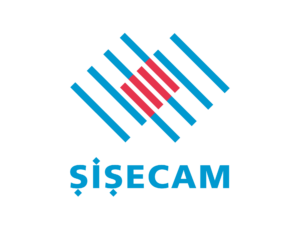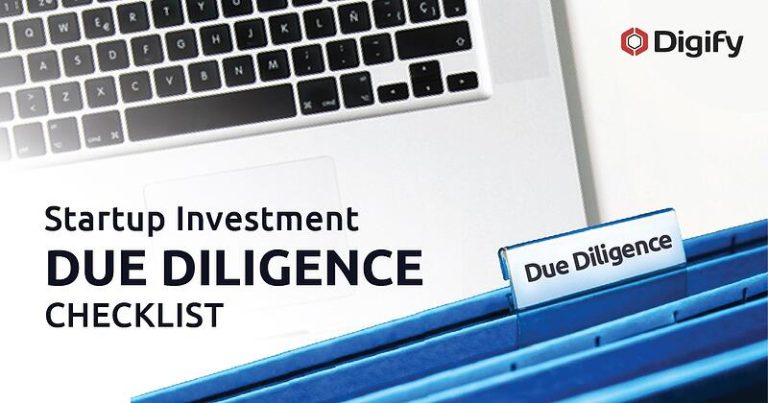This article is part of The Complete Guide to Raising Funds from LPs. The guide covers everything from defining your investment thesis and building strategic fundraising plans to mastering investor due diligence and navigating emerging trends like AI and ESG integration.
Each chapter builds on the previous ones to give you a complete fundraising playbook. While the article below is very informative, you’ll get the most value by reading the entire guide to see how you can fast-track your fundraising process.
In fundraising, first impressions are definitive. Institutional investors, family offices, and sophisticated high-net-worth individuals (HNWI) increasingly demand substance before they grant attention, let alone capital. At the earliest stages of launching a fund, three elements must work in concert: a clear investment thesis, a compelling unique selling proposition (USP), and a fund structure that enables, rather than obstructs, the delivery of value. Getting these right is the scaffolding upon which the entire fundraising effort will rise or collapse.
The Investment Thesis: Discipline Over Opportunism
An investment thesis is often described as a fund’s “north star,” but that metaphor underplays its function. A thesis is a precise articulation of what the fund will do, why it will succeed, and how investors can expect value to be realized.
In today’s crowded market, a generic thesis—“we invest in growth-stage technology companies”—is virtually indistinguishable from hundreds of others. Investors no longer reward vague ambition. Instead, they seek conviction rooted in insight: a detailed view of the market’s inefficiencies, the fund’s advantage in exploiting them, and a rational basis for believing those advantages will persist.
Preqin’s 2021 Global Private Equity & Venture Capital Report found that 62% of LPs cited a strong, repeatable investment strategy as a top reason for selecting a fund manager. This demonstrates that investors prioritise clarity and discipline over generalist ambitions.
Crafting an effective thesis requires answering three questions with intellectual honesty:
- What opportunity does the fund uniquely see
- Why now? Timing, market conditions, and competitive dynamics matter.
- How will success be consistently achieved in this opportunity set?
To effectively articulate these points, an investment thesis must define its scope with specific, structured variables. These often include
- the target company’s developmental stage (e.g., seed, growth, buyout)
- the precise sector(s) or industry verticals of focus (e.g., FinTech infrastructure, sustainable agriculture technology)
- relevant demographics (e.g., companies serving specific consumer segments or geographic regions), and
- the fund’s intended role in investments, such as whether it will lead rounds or participate alongside others.
Specifying these parameters provides clarity and actionable boundaries for the fund’s strategy. For example, a fund focused on acquiring lower middle-market logistics companies should not stop at citing industry growth. It must show asymmetric information advantages, sourcing relationships, operational levers unavailable to competitors, and favourable demographic or regulatory trends that validate the timing.
For the thesis to be compelling, it should also be built upon a clear understanding of the competitive landscape. This involves charting out not only direct competitors—other funds operating within the exact ‘intersection’ of your defined investment space—but also those operating with ‘one degree of freedom removed.’ This means identifying funds that might share some, but not all, of your key investment parameters, such as a similar sector but different stage focus, or the same stage but a related sector. This rigorous competitive mapping demonstrates the fund’s unique positioning and why it is best suited to capture the identified opportunity.
A robust thesis positions a fund not merely as another participant, but as a necessary instrument for realizing latent market value.
The USP: Owning a Defensible Edge
If the thesis explains what and why, the USP answers the harder question: Why you?
Most fund managers believe they have an edge. Few can articulate it clearly, and fewer still can defend it under sceptical interrogation. As LP sophistication grows, so does their insistence on authentic, verifiable differentiators.
A USP should be rooted in genuine capabilities or access that competitors cannot easily replicate. These can include:
- Proprietary deal sourcing: Networks, technologies, or processes that reliably generate superior pipeline flow.
- Sector expertise: Deep operational or technical knowledge that de-risks investments and accelerates value creation.
- Prior track record: Historical returns achieved through similar strategies, particularly if verified by third parties.
- First-mover thematic advantage: Entry into emerging markets or asset classes where incumbents are absent or complacent.
These differentiators are critical because they define a fund’s operational edge across the entire investment lifecycle – often encapsulated by the ‘See, Pick, Win’ framework.
- See (Deal Sourcing & Access): How does the fund consistently gain visibility into a vast and high-quality pipeline of opportunities? Proprietary deal sourcing mechanisms, such as an extensive industry network, an established brand, or data-driven scouting tools, are essential. This ensures the fund sees not just some deals, but enough of the most relevant and promising opportunities, often before they become widely known.
- Pick (Selection & Diligence): Once a deal is ‘seen,’ what unique capabilities enable the fund to select the best opportunities from the many? Deep sector expertise allows a fund to rapidly assess market fit, identify key risks, and perform thorough due diligence. This specialized knowledge helps discern genuine potential from hype, ensuring the fund knows how to pick the right investments with high conviction.
- Win (Closing & Value Creation): In competitive bidding environments, why do founders and sellers choose this specific fund? Beyond just capital, a fund’s USP must articulate how it helps portfolio companies succeed. This could stem from its sector expertise providing hands-on operational support, a strong reputation for being a founder-friendly partner, or a proven ability to attract co-investors. For the most coveted deals, founders often prioritize the ‘smart money’ – partners who bring strategic value, network access, and a clear path to growth, making the fund the preferred choice to win the deal.
Bain & Company’s Global Private Equity Report 2021 highlights a pronounced shift toward specialization, with a growing share of capital flowing to sector-focused funds, especially those targeting technology and healthcare, although it does not quantify the shift.
Specialization conveys mastery. Generality implies mediocrity.
One way to think about how LPs assess fund potential is through a simple conceptual formula:
Fund Size = Track Record × Differentiation / Complexity
Here, Track Record represents the historical investment performance of the fund manager or team. It encompasses realized returns, distributions to investors, and the consistency of performance across previous funds or investments. Differentiation refers to the fund’s Unique Selling Proposition (USP) and its defensible edge, as discussed earlier.
Complexity is a term that captures any aspect of the fund’s strategy, structure, or communication that introduces friction, ambiguity, or difficulty for potential investors. This could be due to various reasons such as:
- Strategic Opacity: An investment thesis that is vague, inconsistent, or lacks a clear, repeatable process.
- Structural Intricacy: An unnecessarily convoluted legal or financial fund structure.
- Operational Immaturity: A lack of robust internal processes, reporting, or governance.
- Unclear Messaging: Jargon-filled, inconsistent, or confusing communication that obfuscates the fund’s true value proposition.
- Team Alignment Issues: Perceived internal disagreements or unclear roles within the investment team.
This equation captures a core truth of fundraising: the larger and more committed the capital you raise, the more it reflects a combination of proven performance, clear competitive edge, and clarity of execution. A compelling track record, when paired with a genuine USP, earns investor attention. But the more complex or confusing the fund’s structure, strategy, or messaging, the more that interest diminishes, as LPs find it difficult to understand, evaluate and commit capital.
In short: LPs reward clarity, credibility, and simplicity. Complexity, unless essential and well-justified, is friction.
Fund Structure: The Silent Signal
Structure is often treated as a technical matter, deferred to legal counsel or accountants. This is a profound mistake. Fund structure communicates as much about a manager’s seriousness and investor empathy as any pitch deck or track record.
Choosing the wrong structure can disqualify an otherwise compelling opportunity. Misalignment of liquidity provisions, misjudged fee structures, or tax inefficiencies are interpreted as signals of amateurism.
McKinsey’s Global Private Markets Review 2021 confirms that closed-end limited partnership structures have long been the standard for private equity funds, especially those above $500 million. Although innovations like continuation funds and NAV-based lending are gaining traction, the default expectation among institutional LPs remains firmly rooted in closed-end models.
Common structures include:
- Limited Partnerships (LPs): The traditional and still dominant structure for closed-end private equity funds, offering limited liability for investors and pass-through taxation.
- Limited Liability Companies (LLCs): Offering similar limited liability and pass-through taxation benefits as LPs but with more flexible governance options, sometimes preferred for smaller or single-investment funds.
- Parallel Fund Structures: Used to accommodate different investor types (e.g., tax-exempt, international) by creating multiple entities that invest alongside each other while addressing specific regulatory or tax considerations.
- Alternative Investment Funds (AIFs): Various structures used outside the U.S., such as the Luxembourg SICAV, Irish QIAIF, or Cayman Islands exempted limited partnership, each offering different benefits for specific investor types and investment strategies.
- Evergreen Structures: Open-ended investment vehicles that allow for ongoing capital raises and redemptions, increasingly popular for certain strategies like private credit and secondary investments.
Selecting the correct vehicle depends not just on internal preferences, but a realistic understanding of target LP expectations, regulatory implications across jurisdictions, and the operational demands of the strategy itself.
An Integrated Approach
Critically, these three elements of the thesis, USP, and structure cannot be developed in isolation. A fund focused on opportunistic distressed real estate, for example, may lose credibility if it proposes an evergreen structure that suggests indeterminate holding periods. Similarly, a manager touting differentiated venture expertise must ensure that their fund design supports rapid deployment and recycling flexibility, not just rigid multi-year lockups.
Alignment across strategy, differentiation, and structure signals to investors that the manager has thought deeply not just about opportunity capture, but about investor experience, operational resilience, and fund longevity.
At a time when capital is increasingly discerning, fund managers must approach fundraising with the rigour of an engineer designing a bridge. An investment thesis without differentiation invites indifference. A USP without proof invites scepticism. A structure without alignment invites mistrust.
Those who master these three pillars not only raise capital more effectively, they establish the foundation for durable, compounding relationships with investors who recognise, and reward, professional excellence.









